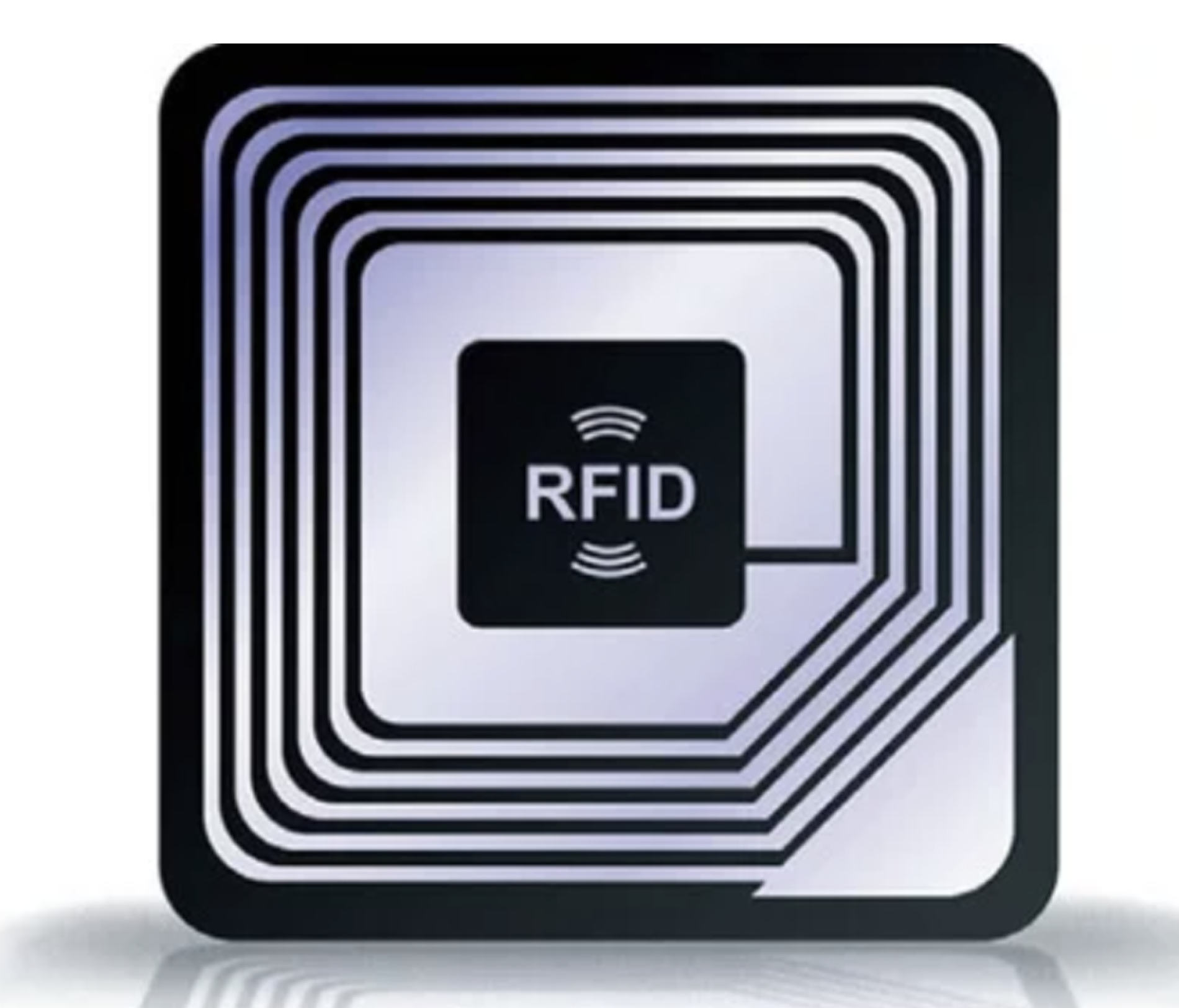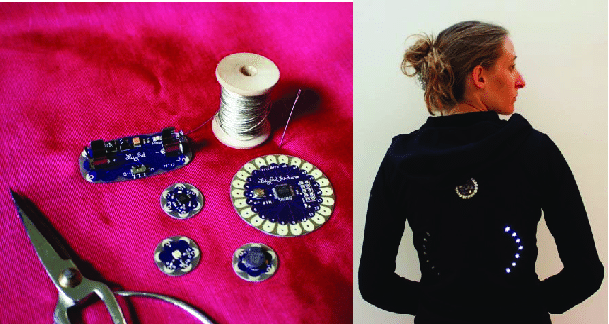Smart data exchange
Communication Protocols
Communication and exchange of data between two devices and/or objects is possible if they both follow and understand the same protocols:
- infrared
- WiFi
- 3G/4G/5G
- GPS
- Bluetooth
- NFC
- ...
WiFi allows you to share a router's Internet connection within a building. Bluetooth allows you to exchange files between two devices. Bluetooth is widely used to play music on wireless speakers... A clever use of techniques such as BLE, NFC, QR, RFID and beacons... enables communication between physical objects and digital devices. For example, you can exchange information between a book and a website, make payments or a garment in a store can send information to your smartphone... They also allow you to locate objects or a user.
Markers
With markers and patterns, you can enable data between non-electronic objects and electronic devices without direct human input:
- bar codes
- QR-codes (quick response)
- hiro-codes
- RFID-tags
- ...
In the above list, the RFID tag is the exception. Bar codes, QR and HIRO codes can simply be printed with a conventional printer.
Learn more about the types of markings: https://developer.mozilla.org/en-US/docs/Web/API/Barcode_Detection_API
QR-codes
Your smartphone's camera is also a scanner that allows you to photograph documents. With an appropriate app, you can even convert the documents back to editable text via OCR (optical character recognition).
In quite a few smartphones, the camera already automatically recognizes QR codes. The QR (quick response) code seems to be the successor to the barcode. It can contain a price, but also text information or a link. Banks use it with their mobile apps to approve payments. When a publisher adds a QR code to a book, the link in the QR code allows the reader to access additional online information about the book
QR is a relatively easy technique to integrate. You need a piece of software to generate the codes and you can simply print the code on a printer. The end user needs a camera app on their smartphone and the necessary software to read the code.
NFC, RFID, beacons and BLE

Outdoors, you can easily determine the location of something or someone from a GPS chip. Indoors, that's a different matter. After all, even if you can figure out from the GPS chip that someone is at a certain place in a building, it is difficult to determine exactly where in that building or on which floor. After all, the inside of most buildings are private or at least not "public."
Sometimes it could be interesting to know where someone is located. For example, think of applications for marketing purposes where a product itself notices a potential "consumer." Or consider museum where a cultural artifact (a painting) understands what the visitor is looking at.
A number of techniques may be of interest here:
- BLE: bluetooth low energy
- NFC: Near field communication
- Beacons
- ...
RFID (radio frequency identification) is a technique for "uniquely" identifying physical objects or even living things. A complete RFID system includes a tag, a reader (reader) and an antenna. The reader ("reader") sends out a signal through the antenna. The "tag" responds with the unique information (for example, a product code, a price... Active RFID tags have their own "power supply" and can transmit radio signals of their own up to about 100 m. Passive RFID tags get their energy from the electromagnetic waves emitted by the RFID reader. Because the radio waves must be strong enough, passive tags only work well at limited distances (direct contact up to about 25 m).
NFC (near field communication) is a specialized "relative" of RFID technology. An NFC device can be either a reader or a tag. NFC devices must be (as the name suggests: "near") close together, a few centimeters away. That's why stores like to use it for contactless payments. All you have to do is hold your bank card against the payment terminal. Secure exchange of information is the main purpose of NFC.
NFC, meanwhile, is finding its way into the new generation of smartphones. If you hold two NFC smartphones near each other, they can exchange photos (by "swiping," for example). But it is also possible, for example, to equip posters or posters with an NFC tag to exchange information with consumers' smartphones. Audio equipment equipped with NFC can play music simply by putting your smartphone on it. In summary: NFC (Near Field Communication) is a wireless way to exchange small amounts of information within a 10-centimeter radius. The chip in your smartphone communicates with another NFC device, such as payment systems, speakers or other smartphones, Beacons or iBeacons are small bluetooth transmitters (bluetooth uses radio waves). A beacon looks like a small box and contains a Bluetooth Low Energy (BLE) chip and a battery. Each beacon continuously transmits a unique number. A BLE-enabled smartphone can pick up this signal. If you know where which beacon is located, you can find out where someone is inside a building or store. Beacons are thus an ideal way of indoor positioning, as GPS is less useful there.
Apple is embracing BLE as an alternative to NFC. While NFC only works at a few centimeters, BLE reaches as far as 70 meters. An important advantage is that there is no complicated installation involved. You can place them wherever you want. An iOS or Android device knows who you are. Combined with beacons, the smartphone app knows where you are. If we don't dwell for a moment on the privacy implications, this technology creates a lot of new opportunities: Indoor positioning and navigation, sales promotion (in-store promotion), loyalty (loyalty cards), access control (alternative to access cards), transactions (contactless payment)...

Wearables and softwear
Wearables especially fit the health hype. A wearable is a gadget worn on the body that collects information about your body. Most of these devices collect personal data about the user. They provide advice about and for your health. Activity trackers are smart devices that track how much you exercise and how many calories you burn. Sportswatches have additional functions: such as measuring your heart rate or sleep rhythm,...
But manufacturers are particularly interested in the data they can piggyback on users. They are part of the big data that big companies like Google and Apple collect and sell to insurance companies and other buyers.
The LilyPad Arduino provides you with a flexible microcontroller to transform your clothing or textiles into smart clothes (e-textile). The developers themselves speak of softwear in this case.
Data recognition with AI
The development of image recognition algorithms in AI has boomed. In addition to biometric recognition (fingerprint recognition and "recognizing" an iris (in your eye), algorithms for face and "image" recognition are revolutionizing data exchange. They make it possible to recognize data "on the spot" or "on the fly."
For example, a self-driving car immediately recognizes traffic signs and traffic lights or other road users. Image recognitionalgorithms instantly recognize text in an image (for example, a car license plate), as well as the various objects and parts of a camera image. Face recognitioncan range from simply "noticing" faces (people) to "recognizing" people (by name).
If you want a piece of software to learn to recognize a dog, you must first feed the software with hundreds or thousands of images of dogs. The mass of data we have collected through big data techniques comes to the rescue here. ImageNet is a giant database of millions of images. The project has been instrumental in advancing computer vision and deep learning research. The data are freely available to researchers for non-commercial use. Through a selection of data from such a database, 'image recognition' software learns incrementally that both a pekinese and a pit bull are dogs. In addition, the software should learn that both Disney's Pluto, and Lassie are dogs.
Only if a robot can quickly and accurately recognize objects can it (she?) 'walk around' like real people. Self-driving cars, for example, use AI-based computer 'vision' and 'image recognition' to recognize pedestrians, road signs, vehicles.... They must be able to recognize not just one particular object, but all parts in the visual field, and preferably at lightning speed. A self-driving car traveling at a decent speed must recognize a light that turns red, a child running after a ball in the right context. A child playing on the sidewalk, for example, is not an immediate problem, only if it suddenly runs into the street. So the AI software must recognize not only the parts (" object segmentation"), but also the overall context of the image constantly, as a stream of incoming data, and estimate how to respond appropriately. But whether understanding the context, the "umwelt," will also lead to a form of "artificial awareness" is another story.